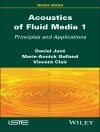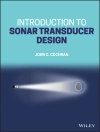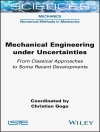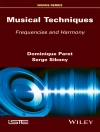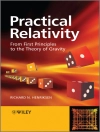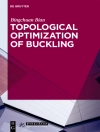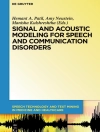This book gives an update on recent developments in different engineering disciplines such as mechanical, materials, computer and process engineering, focusing on modern engineering design applications. These disciplines provide the foundation for the design and development of improved structures, materials and processes. The modern design cycle is characterized by an interaction of different disciplines and a strong shift to computer-based approaches where only a few experiments are performed for verification purposes. A major driver for this development is the increased demand for cost reduction, which is also connected to environmental demands. In the transportation industry (e.g., automotive), this is connected to the demand for higher fuel efficiency, which is related to the operational costs and the lower harm for the environment. One way to fulfill such requirements is lighter structures and/or improved processes for energy conversion. Another emerging area is the interactionof classical engineering with the health, medical and environmental sector.
The chapters are selected contributions of the Advanced Computational Engineering and Experimenting conference, held in July 2022 in Florence, Italy.
Inhaltsverzeichnis
Preparation of Thermoplastic Blends Filled with Polysaccharide and Study of their Properties Before and After Ageing.- Rheological and Mechanical Properties of Rubber Blends Filled with Modified Bentonite.- Utilization of Microwave Radiation for Chemical Modification of Kaolin and its Influence on the Curing, Mechanical and Surface Properties of Rubber Composites.- Simulations of Tests of Polymeric Composites Based on Experimental Data.- Study of Influence of Calcium Carbonate Sedimentation on Electric Heater Efficiency.- A 3D Fiber-Based Strategy for Optimization of Tissue Materials Using a Combination of Liquid Absorbency/Retention Methods.- Nanomaterials based on Peptide Nanotubes with Graphene and Ferroelectric Polymers Layers: Modelling and Numerical Studies of Photoelectronic Properties.- Mechanical Design of a Thermo-Mechanical-Cryogenic System to Evaluate Mechanical Properties of Samples of 3D Printing Systems.- Investigation of Local Discontinuous Galerkin Method on the Solution of Convection-Diffusion problems.- Adjustment of analytical methods by numerical models for determining earth pressures behind retaining walls.- Enhanced Transverse Displacements Analysis of Transversely Cracked Beams with a Linear Variation of Width due to Axial Tensile Forces.- Design of a System to Produce Rapid Biomedical Prototypes with Synthetic Materials: State of the Art.- Biomodeling and Numerical Analysis of the Different Pathologies of the Upper Limb (Arm) that Limit Movement in Patients.- Study for Validation and Implementation of Polymethyl Methacrylate in Neurocranium and Viscerocranium Prostheses.- Numerical Biomechanical Analysis of the Fixation of Three Titanium Screws for Elbow Coronoid Fracture.- Energetic Numerical Analysis of the Effect of Impact Loads into a Human Skull (Frontal and Lateral).- Design of Dynamic Systems and Electro-Assisted Immersion Connected with Fourth Generation Technology for the Use in Aquatic Therapy in Mexico.- Dynamic and Experimental Testing of a Biomechanical System: Cadaveric Temporomandibular Specimen and a Multiaxial Joint.- Application of Generative Design and Reverse Engineering for the Improvement of a Dental Articulation System.- Buckling Analysis of an Origami-Inspired Structure with the Finite Element Method.- Accumulated Damage of the Main Steam Nozzle of a BWR-5.-Modeling and Design of Guillotine Cutting of a Cold Working Steel Sheet by Using FEM.- Comparison of IR and Visual Stream in Maritime Zone Surveillance in Cases of Low and High Visibility Conditions.- Compressibility Effects on the Hydroelastic Vibration of a plate at on Off-Center Position of a Rectangular Container Filled with Fluid.- Pedagogical Aspects of the Topic of Connection Properties in the Undergraduate Curriculum Using Catia v5 and Glulam Beam as the Benchmark.- Demand Forecasting, Production Planning, and Control: A Systematic Literature Review.- Assessment of Risks for Physical Calibration Labs.
Über den Autor
Holm Altenbach is Member of the International Association of Applied Mathematics and Mechanics and the International Research Center on Mathematics and Mechanics of Complex Systems (M&Mo CS), Italy. He has held positions at the Otto-von-Guericke-Universität Magdeburg and Martin-Luther-Universität Halle-Wittenberg, both in Germany. He graduated from Leningrad Polytechnic Institute in 1980 (diploma in Dynamics and Strength of Machines) and was awarded his Ph.D. degree in 1983 and his Doctor of Technical Sciences degree in 1987 at the same Institute. He is since October 1st, 2022 retired Professor of Engineering Mechanics at the Otto-von-Guericke-Universität Magdeburg, Faculty of Mechanical Engineering, Institute of Mechanics. His areas of scientific interest include: general theory of elastic and inelastic plates and shells, creep and damage mechanics, strength theories, and nano- and micromechanics. He is Author/Co-author/Editor of 80 books, 580 scientific papers (310 of which were peer-reviewed) and 550 scientific lectures. He was Managing Editor (2004 to 2014) and has been Editor-in-Chief (since 2006) of the Journal of Applied Mathematics and Mechanics (ZAMM)—the oldest journal in mechanics in Germany (founded by Richard von Mises in 1921). He is Advisory Editor of the journal Continuum Mechanics and Thermodynamics (Springer), Associate Editor of the journal Mechanics of Composites (Riga) and Editor of the Springer Series “Advanced Structured Materials.” His numerous awards include: the 1992 Krupp-Award (Alexander von Humboldt-Foundation); 2000 Best Paper of the Year (Journal of Strain Analysis for Engineering Design); 2003 Gold Medal of the Faculty of Mechanical Engineering, Politechnika Lubelska, Poland; 2004 Semko-Medal of the National Technical University Kharkov, Ukraine; 2007 Doctor Honoris Causa, National Technical University Kharkov, Ukraine; 2011Fellow of the Japanese Society for the Promotion of Science; 2014 Doctor Honoris Causa, University Constanta, Romania; 2016 Doctor Honoris Causa, Vekua-Institute, Tbilisi, Georgia; and 2018 Alexander von Humboldt Award (Poland). In 2019, he was elected as Foreign Member of the Russian Academy of Sciences and in 2021 of the National Academy of Sciences of Ukraine.
Andreas Öchsner is Full Professor of Lightweight Design and Structural Simulation at Esslingen University of Applied Sciences, Germany. After completing his Dipl.-Ing. degree in Aeronautical Engineering at the University of Stuttgart (1997), he served as Research and Teaching Assistant at the University of Erlangen-Nuremberg from 1997 to 2003 while pursuing his Doctor of Engineering Sciences (Dr.-Ing.) degree. From 2003 to 2006, he was Assistant Professor at the Department of Mechanical Engineering and Head of the Cellular Metals Group affiliated with the University of Aveiro, Portugal. He spent seven years (2007–2013) as Full Professor at the Department of Applied Mechanics, Technical University of Malaysia, where he was also Head of the Advanced Materials and Structure Lab. From 2014 to 2017, he was Full Professor at the School of Engineering, Griffith University, Australia, and Leader of the Mechanical Engineering Program (Head of Discipline and Program Director).


